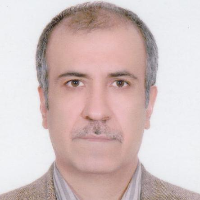Cultural Capital and Fertility: A Study among Married Women Aged 15-49 in the City of Rasht
During the last few decades, reducing fertility rates to the below replacement level has been widespread in Iran but the experience of Gilan province is significant in this regard. According to the latest estimates in 2020, the total fertility rate of this province was 1 child. The present study aims to investigate the subjective reasons for low fertility rates. The theoretical approach of the study is the approach of Pierre Bourdieu's capital and the concept of "cultural capital" and its constituent components (embodied, objectified and institutionalized). The research method is survey, the data collection tool is questionnaire, the statistical population is married women aged 15-49 in Rasht, the method is random cluster sampling and the sample size is 391. The findings show that childlessness and low childbearing are common reproductive behaviors and the majority of respondents (about 67%) do not decide to reproduce. According to the findings, there is a significant and inverse relationship between cultural capital and all its dimensions (embodied, objectified and institutional) and reproductive behavior (the number of live births per woman) and with increasing cultural capital, fertility decreases. Accordingly, although structural factors play a role in fertility, attitudes, tastes, values and consequently choices are also important and there is a need to harmonize the mental expectations and objective position of families.
Fertility , Cultural Capital , education , Women , Rasht
-
Analyzing the Causes of Reverse Migration in the Villages of the Central Part of Masal City, Iran
Seyyedeh Fatemeh Safavi Mirmahalleh, Hojjatollah Rashid Kolvir *, Hamid Ebadollahi Chanzanaq, Mohammadamin Kanani
Journal of Population Association of Iran, -
From Erziehung to Bildung: Sadegh Hedayat’s Experience of Modernity(A Figurational Sociological Reading of Temporality in The Blind Owl)
Hadi Qolipur *, Mohammadmahdi Rahmati, Hamid Ebadollahi-Chanzanaq
Literary Theory and Criticism, -
Extramarital Affairs and the Contexts: A qualitative Study in Rasht
MohammadAmin Kanani *, Mahboubeh Alijani
Journal of Sociology of Social Institutions,



